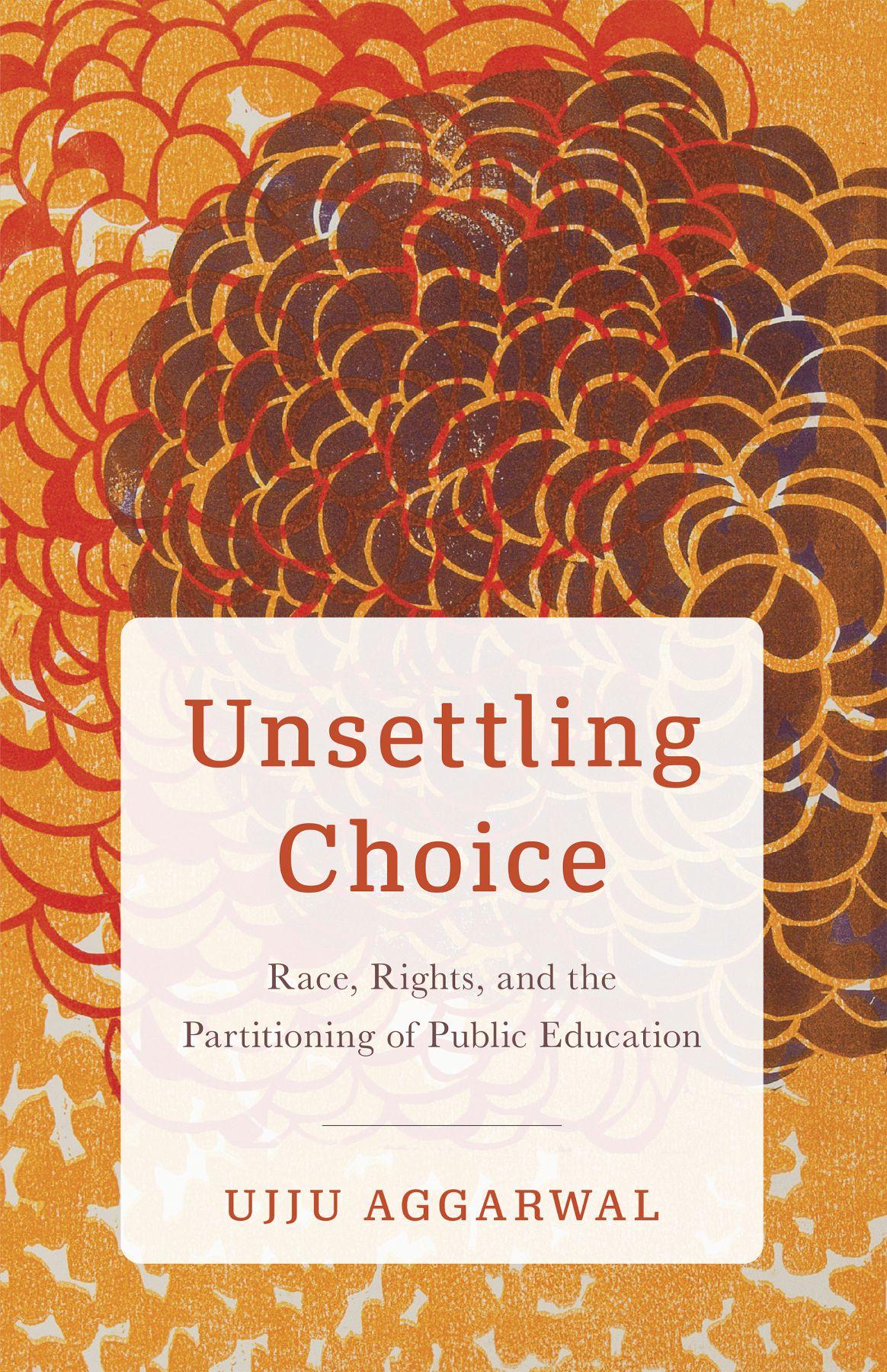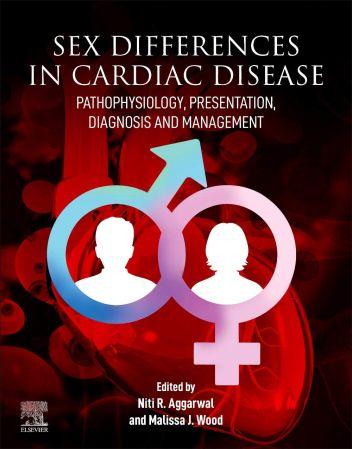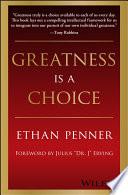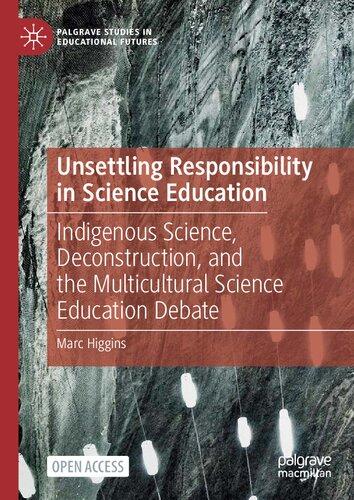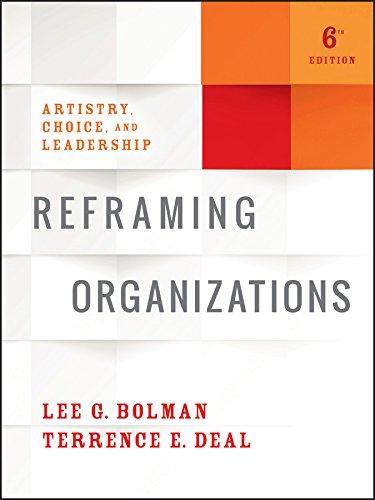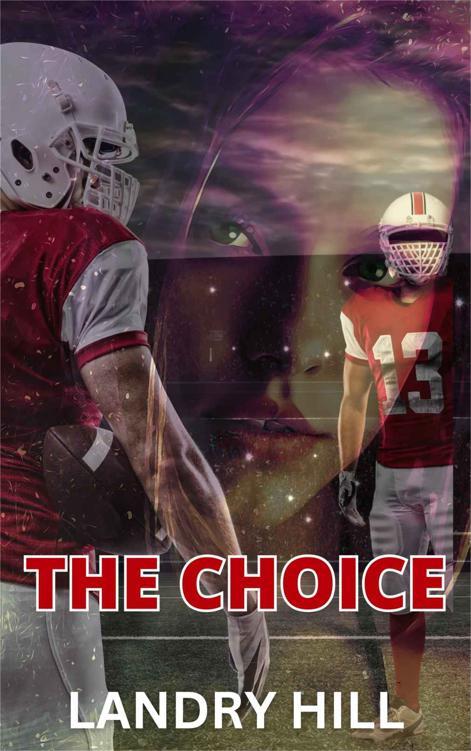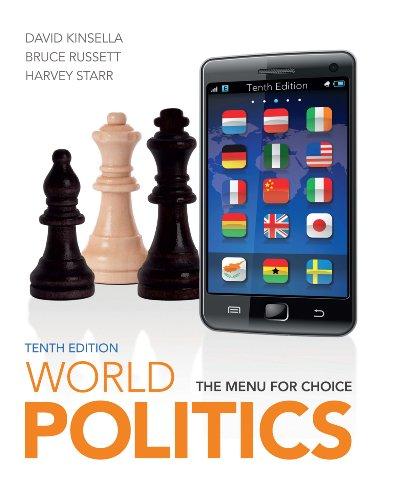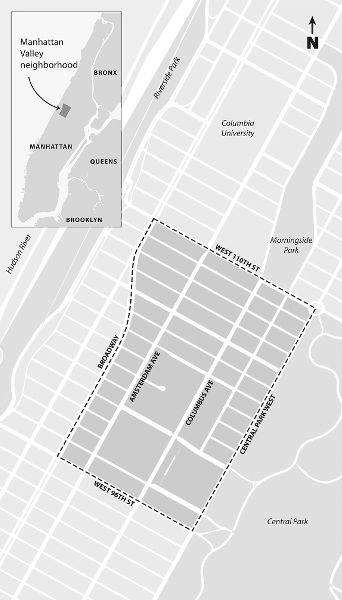Unsettling Choice
Race, Rights, and the Partitioning of Public Education
Aggarwal
UniversityofMinnesotaPress
Minneapolis
London
Ujju
Portions of chapter 2 were published in a different form in “The Politics of Choice and the Structuring of Citizenship post-Brown v. Board of Education,” in TransformingAnthropology22, no. 2 (2014): 92–104; and in “School Choice: Raced Rights and Neoliberal Restructuring,” What’sRaceGottoDowithIt?HowCurrent SchoolReformPolicyMaintainsRacialandEconomicInequality, 2nd ed., ed. Edwin Mayorga, Ujju Aggarwal, and Bree Picower (New York: Peter Lang, 2020). Portions of chapters 2 and 3 were published in a different form in “After Rights: Choice and the Structure of Citizenship,” FeministsRethinktheNeoliberalState: Inequality,Exclusion,andChange, ed. Leela Fernandes (New York: New York University Press, 2018).
Copyright 2024 by the Regents of the University of Minnesota
All rights reserved. No part of this publication may be reproduced, stored in a retrieval system, or transmitted, in any form or by any means, electronic, mechanical, photocopying, recording, or otherwise, without the prior written permission of the publisher
Published by the University of Minnesota Press
111 Third Avenue South, Suite 290 Minneapolis, MN 55401-2520 http://www.upress.umn.edu
ISBN 978-1-5179-1566-7 (hc)
ISBN 978-1-5179-1567-4 (pb)
LC ebook record available at https://lccn.loc.gov/2023040806
The University of Minnesota is an equal-opportunity educator and employer.
Contents
Introduction
1. The Historical Production of Limited Permanence in Manhattan Valley
2. The Post-BrownRealignment and the Structure of Partitioned Publics
3. Diversity, Choice, and the Myopia of Partitioned Publics
4. Mapping the Spaces of Care and Social Reproduction
Coda
Acknowledgments
Notes
Bibliography
Index
Introduction
Warm air and sunlight meet me as I make my way across the concrete island dividing Broadway. It is a spring evening in 2004, and these elements mark the time of year when days are getting longer, and the end of the 180-day school year is in sight. On the walk from the train station over to P.S. 33—a school that sits at the intersection of the historic dividing lines between “uptown” and “downtown” schools in the area—you can see the city’s horizon as it takes shape against the Hudson River, the expansive waterway that, like education, holds the contradictory history of being a life-giving tributary that was repurposed as a mechanism of enclosure.1
The auditorium at P.S. 33 that evening was full. Parents, mostly mothers, made up much of the audience. Members from some schools sat together, making it so that rows of Black and brown parents were met by rows filled with mostly white parents. Those gathered were there for a special meeting called in response to a report issued by the Center for Immigrant Families (CIF), a social justice organization in the area that, in 1998, I had joined with others to build—and where I had also worked as a community organizer. Our makeshift office, located on 104th Street, in the community room of a Section 8 apartment building, was connected to one of several community gardens that dotted the neighborhood of Manhattan Valley. Many of the gardens were built during the 1980s by poor and working-class residents, making claims in place to a city they understood they had a right to. We were down the block from a local elementary school, New York City Housing Authority’s (NYCHA) Frederick Douglass Houses, and a supermarket that, despite getting repeatedly renamed, was reliable on one count: it stayed the same on the inside, consistently selling the same overpriced and often expired food. We were also just down the block from the northern end of Central Park and its west side, where doormen lined the buildings bordering the green expanse—not far
from where Seneca Village once thrived. Inside our office, a picture of Audre Lorde with her arms raised hung on one wall, a quote underneath read: “When I dare to be powerful, to use my strength in the service of my vision, then it becomes less and less important whether I am afraid.”
Perhaps it was partly Lorde’s words that inspired the stories that were shared there, guided also by deep commitments to popular education and the significance of storytelling to transformative social change. And among the stories shared, women in our English literacy program had, in recent years, started talking more about their experiences trying to access local elementary schools for their children, schools that some had attended as children themselves. The stories that were shared inspired others to tell their own, shifting sentiments from individual troubles or failings toward a structural analysis that itself was shaped by the stories. Slowly, we braided our experiences together, asked more questions, and eventually came to organize against what would later be nationally recognized as one of the most diverse, yet segregated and unequal school districts in the United States’ largest school system.
We learned that at the time, due to under-enrollment, about 50 percent of kindergarten seats in many of the district’s public schools were assigned based on the discretion of individual administrators. Together, we crafted a participatory action-research (PAR) project that brought into focus how poor and working-class parents were increasingly shut out of some public schools. Key to our PAR project was Augusto Boal’s theater of the oppressed methodology. According to Boal, a central goal of reenacting stories is creating the possibility to collectively reflect on instances of injustice, and through the reenactments, practice working out what a person or group might do differently in the same situation. In this way, would-be audience members participate as what Boal termed “spectactors,” analyzing and rehearsing together how they might transform their lived conditions. Weaving together members’ stories into composites, we reenacted them in school cafeterias around the district, thus launching our “cafeteria theater.” The method proved critical to shifting consciousness and also invited the sharing of more stories
that included parents being told by school workers that certain schools were “not for them” and directed toward others, where they would ostensibly be more “comfortable.” Stories of immigrant parents being redirected to schools that could “speak their language.” And more stories. As Michelle, the educational director at the Head Start Center in the neighborhood put it, “Stories are like roaches.” Her point being that if there is one or even a few stories that are told, there are undoubtedly many more. If you pay attention, you might discover a pattern that can tell you about the source of the problem. And she was right. Pieced together, these stories gave shape to patterns of not-new-but-intensified public school segregation in the district.
The year 2004 also marked the fiftieth anniversary of Brown v. Board of Education, which helped our efforts to change admissions policies in the district get some traction in the press. The attention we garnered led some to believe that we were being advised to file a lawsuit. Despite there being no actual lawsuit, the rumors, informed by the limited imaginations of how many understood social change to take shape, worked in our favor, exposing the fear and recognition among district and municipal officials of the potential consequences of the discretionary admissions being enacted. And so the district called a meeting that was held at P.S. 33. Recalling the evening years later, some called it a “hot night.” Others remembered how Cristina, a CIF organizer and collective member who was fluent in both English and Spanish, had deftly decided to address New York City Schools Chancellor Joel Klein—who was in attendance that evening—in Spanish to demonstrate the district’s consistent disregard for language interpretation. Many of those I spoke with recounted the anger and irritation that had grown increasingly palpable that evening when Chancellor Klein noted that the “system was inequitable and needed to change.” Klein’s unexpected off-thecuff remark, recognizing structural injustice and the need for change, took many by surprise, and the air in the auditorium grew heavier.
One mother, a white woman who was visibly pregnant, rose from her seat. Standing in the middle of the auditorium, she declared that
she had recently bought a condo in the neighborhood and that local district policies were not going to determine the fate of her unborn child or deny her the right to choose what was best for her child. Like others she sat next to, she had identified the need to make sure that her rights and those of her child would be protected. In some ways, she was not so different from her Black and brown counterparts sitting in other sections of the auditorium. They all similarly expressed wanting the best for their children—referencing their role as mothers in making that happen. Yet, for this woman, rights were predicated on and secured through her recent housing purchase. And as such, the rights she invoked were distinct from, and established against others—in this case, a group of women in the auditorium that evening, most of whom lived in public or lowincome housing, and came with each other, their stories, and a row full of placards, some of which read: EDUCATION IS A HUMAN RIGHT, NOT A LUXURY, END SEGREGATION NOW, OR ALL CHILDREN DESERVE A DECENT EDUCATION.
I begin with this vignette because over the course of twenty years’ work in the Manhattan Valley neighborhood, it is a story that has stuck with me. It also captures many of the ideas, tensions, and questions at the center of this historically informed ethnography. In the years that followed that meeting, the battles that played out at the schools in the area—over who they would serve and prioritize— intensified, and encounters like the one described above became increasingly common. Throughout that time, at CIF, we fought for what we envisioned to be quality public schools that would reflect, serve, and respect the communities they were part of: schools that would value all children and families and schools that would be places of learning, growth, and nourishment. Our vision, like that which informs most organizing, was about something that did not yet exist, for public schools that were still not won but were representative of the social transformation we imagined and worked for. Embedded in these fights that took place amid intensified gentrification was also a struggle over everyday institutions through which life is reproduced and the social relations inculcated therein: over place and community, over what the future of the public in this
place would be, and over whose futures the public would make or break.
At the time, the growth of charter schools, which had been spurred by mayoral control and the rollout of the No Child Left Behind Act (2002), had resulted in increased attention to the looming privatization of public education. But our own organizing, which responded to the material conditions of our membership, was not focused on private or charter schools, though we did confront a similar set of circumstances often associated with privatization. That is, the circumstances we encountered—which included a competitive and opaque landscape of admissions, uneven access, and a limited ability to assert rights or entitlements to services—were found within public schools; they did not require the mechanism of privatization. It was also the case that within our district, the minority power bloc of parents with economic capital on their side, most of whom identified as white and, claiming progressive politics, positioned themselves simultaneously against privatization—often referenced in relation to the growth of charter schools—decidedly pro-public, but also, in defense of policies of public school choice.
The questions taken up by this book begin from this particular context; they ask what we might learn from the contradictions confronted in our organizing, which exposed how struggles for racial justice in public schools—one of the last remaining universal public goods in the United States—were entrapped within neoliberal regimes rooted in logics of racial capitalism. Such regimes, which ensured exclusion, were enlivened through the expansion and structuring of rights to the public good of education and couched in language of equity, diversity, rights, and care. In the pages that follow, I map and analyze how this came to be, its implications, what it helps us to understand, and how it might shape and inform how we struggle for and reimagine justice and a public that remains to be won.2
A Shrinking Distance between Unintended Neighbors in Manhattan Valley
This book is rooted in a place that is known to some as Manhattan Valley, a neighborhood that encompasses a small stretch of land spanning about one square mile. Tucked between New York City’s Upper West Side and Harlem, Manhattan Valley was a place that remarkably did not draw much attention, apart from when it did— which generally involved struggles over housing and schools.
Manhattan Valley depicted in a shaded area and outlined by a dotted line following the neighborhood’s borders. An inset for Manhattan provides context. Map by Anandaroop Roy.
The neighborhood has a concentration of public and low-income housing that, we will learn, resulted from urban renewal and removal as well as from insurgent organizing. This fact becomes significant to our story as this infrastructure of housing ensured that in the face of waves of gentrification (Hackworth and Smith 2001) that have swept through the area, poor and working-class families of color remained. While economic crises—qualified by job losses and mobilized to push forward rent hikes as well as austerity measures— had resulted in some residents being pushed out, many poor and working-class families managed to stay. Yet despite the area’s “diversity,” neighbors remained largely separated by spoken and unspoken lines of partition animated by race and class—and many would-be neighbors rarely met. This was true even in places of potential convergence, such as public schools.
Manhattan Valley was part of a school district noted to be among the most diverse yet segregated and unequal districts in New York City. This district stretches about three miles north to south and one mile east to west, encompassing the neighborhoods of the Upper West Side, Harlem, Morningside Heights, Manhattanville, and Manhattan Valley: it is the size of many county districts across the country. Low-income Black and Latinx students accounted for the majority in the district’s public schools; and one-fifth to one-quarter of the entire student population was comprised of middle-income and white students.3 A strong public transportation infrastructure that includes a number of subways and buses creates a context in which the racial geography articulated by the district’s segregated and unequal schools could not be easily dismissed as a problem of proximity or access to transportation. Moreover, most CIF members, as well as the women I later accompanied in my research, stated affirmatively and repeatedly that they would, without a doubt, take a train or bus—and figure out how to pay the fare—if it meant securing a “good school” for their child. What “good” meant was, as many have documented, subjective (Walker 1996; Ewing 2016; Posey-Maddox et al. 2021; Freidus 2022)—and this book works to examine the structured production and cultural logic that underlies its normalization.
But what happens when the distance between what we might consider to be unintended neighbors shrinks, and when the seemingly fixed borders and boundaries that some have relied upon (while others have contested) become exposed as pliable? These are the questions that came to the fore as I began my official fieldwork for this book. It was the period following the 2008 Great Recession. Public schools were increasingly on alert, fearful of being pulled into the sweep of school closings that began with being labeled “underutilized,” or subjected to cuts in already stretched budgets. In this context, school leadership took what seemed to be reasonable action, and actively started recruiting families with economic means in order to both boost enrollments and mitigate shrinking school budgets. In the wake of the financial crisis, the recruitment was not so hard, as many families in the district and throughout the city were reconsidering their plans for, or investments in, private schools. In many schools, the targeted recruitment was tied to and made possible by the expansion of school choice policies, which in Manhattan Valley would come to include charter schools, districtwide choice programs, dual-language programs, general education programs, gifted and talented programs, and magnet programs. The expansion of policies of school choice provided yet another one of the district’s distinguishing characteristics: in addition to being one of the most diverse yet segregated districts, it also would eventually offer the widest range of options to parents as to where they could send their child to school. The migration of families into public schools during this time was often narrated as an investment in civic life and the common good, invoking ideas about democratic life. Yet the common good meant different things to different people, and the period was also characterized by contestations over who schools would serve and prioritize, intensified segregation and inequality, competition, consumer citizenship—punctuated by differential rights claims to the public (Posey-Maddox et al. 2014; Kafka 2022). Though the questions this book addresses focus on contradictions that took shape in the particular place of Manhattan Valley and the school district it is part of, both the questions and contradictions stretch beyond the geographic borders of both.
Partitioned Publics
In this book I follow what happened when the unintended neighbors of Manhattan Valley, those who had come to live alongside each other but rarely met, came to encounter one another to negotiate the shared resource of public schools. I explore the disputes, tensions, and debates that qualified these encounters and what they might teach us about what I term partitioned publics, or the embeddedness of a market-based infrastructure within the realm of the public that requires competition and cultivates a myopia of consumer citizenship, ensuring that conditional inclusion anticipates and is predicated on exclusion and inequality, resulting in the continued production of hierarchical and racialized group differentiation. As the child of parents who grew up during British colonialism, partition was something I grew up hearing about—and not hearing about. Referenced as an event, a border, a process, an analysis of colonial power and also as tragedy, loss, and violence— partition was understood to be both illogical and a social fact against which contingent histories were made and claimed and also through which power worked to enliven and mobilize difference to articulate antagonistic racial logics.
But beyond my own personal references to the term, by partition (Gilmore 2012, 2017) I mean a set of political and social processes through which the social separateness, devolution, and hierarchical group differentiation integral to racial capitalism are articulated, naturalized, and reproduced (Gilmore 2012, 2017; Melamed 2015). Understood as such, partition signals an active and ongoing separation, one that is relational and contingent, ideological and material, and never quite complete. Encompassing that which disjoins or deactivates humans from one another, partition relies on processes and mechanisms which, as Marx said in reference to private property, “leads every man to see in other men, not the realization, but rather the limitation of his own liberty” (1978, 42). A structure of political and legal rights as well as a set of social relations and a cultural logic through which we come to recognize in one another only the limits to our own freedom—rather than seeing
in one another the possibility of freedom—partition produces the opposite of what Cedric Robinson termed “ontological totality.” As Ruth Wilson Gilmore further explains, partition includes and yet extends beyond physical and material boundaries. The logic of partition relies on the cultivation of a common sense through which the processes that make social separateness, devolution, dispossession, and exclusion integral to racial capitalism and to the production of differentially valued life come to be naturalized, reproduced, and narrated as just and meritocratic (Gilmore 2012, 2017; Melamed 2015). I find partition to be particularly helpful as it implies an active, produced, and ongoing separation—one that is relational and contingent, and never quite complete. Unlike the ways that segregation has come to be understood as an inevitable condition that can only be better managed, partition draws attention to our present circumstances as bound up in the relations of power within which we are not only subject, but also embedded, as political agents. Far from a pessimistic stance, implicit in this reading is an emphasis on the critical need to collectively and radically imagine otherwise. Moreover, partition offers the provocation to not only imagine but also enact, create, and forge different political futures.
But what does any of this have to do with public schools? In the United States, public schools are often positioned as a public good, a shared resource that stands in opposition to privatization. This is not untrue. Yet the framework of partitioned publics asks us to consider what happened when supposedly universal rights of inclusion came to be structured as individual, private rights; foundational to which was an understanding that the right to choose—qualified also as the right to exclude—was necessary to the enactment of democratic freedom. Through this critical examination, partitioned publics works to illuminate a public sphere that always already anticipates separation—one that is conjoined to the continued production of hierarchical group differentiation, articulated as racism (Hall 1980; Gilmore 2007)—instead of a public where collective life and radical forms of relationality might be cultivated.
It is important to note that school choice has, at different historical moments, represented a progressive set of demands and
other times an insurgent vision for self-determination (Foreman 2005; Rickford 2016). My project here, however, is to problem-pose what universal rights to public goods like education came to mean when they were codified as individual, private choices—and what political futures of the public were delineated as a result. In doing so, I trouble assumed binaries between public and private, consumer and citizen, and the market. I show how these categories and sectors become increasingly blurred, requiring us to reconsider how we “see” or locate neoliberalism and also the realm of (and the struggle for) the public. Moving beyond a focus, for example, on expanding charter schools or voucher programs, I track how choice, a key principle of reform and management in education that emerged in the post-Brown period, ensured a public that anticipated and ensured exclusion, scarcity, competition, and inequality. Specifically, I trace how the post-Brown structuring of rights, anchored in choice, firmly entrenched key aspects of neoliberalism—the use of market-based logics to organize public goods and the cultivation of a consumer citizenship—within the public realm. In doing so, I locate neoliberalism in education as developing in tandem with, and in response to, the insurgent, expansive, and protracted vision of the public and of rights that grounded Black freedom struggles. Engaging a conjunctural analysis, the framework of partitioned publics shows that it was not by accident that rights to education—a key node of the liberation movements in the United States (and beyond)—came to be structured as such. Understanding public schools in this way as part of a long fight for freedom that is not yet complete—also then shifts how we conceive of and locate present-day contestations over education.
Moreover, emphasizing the ways that “racial capitalism is the process by which the key dynamics of capitalism . . . become articulated through race” (Jenkins and Leroy 2021, 3), the framework of partitioned publics asks us to unsettle the ways that segregation, like racism, has become assumed and anticipated, a wholly natural and inevitable condition of public schools, predicated on reified and static notions of race, marginalization, disparity, and
advantage that can only be better managed. I destabilize such presumptions while also illuminating the multiple interconnected scales through which partition takes shape and is reproduced, with particular attention to the role of rights in these processes. Importantly, approaching rights in this way does not discount the meaning or significance of rights to marginalized and oppressed communities, but rather examines the relationship of rights to production of marginalization, problematizing how the scale of the individual has become the “moral unit for political life” in such a way that the “radical and collective uses of rights born from colonized and racialized people’s movements” came to be negated and encased (Melamed and Reddy 2019). The framework of partitioned publics then asks us to consider what aspects of collective political life were foreclosed through the structuring of universal rights to education as individual private choices. In addition to emphasizing the market-based infrastructure established in the post-Brown moment, I pay close attention to the cultural logic and the character of the social relations forged through, within, and against partition thus considering not only the limitations of liberal rights but also their productive capacities (Brown 1995).
While partitioned publics direct us to the limits of the public realm, connotated by an understanding of rights that positions one’s freedom as inherently in competition against that of another’s, it also propels us to expand our political horizons. That is, partitioned publics ask us to consider the public we actually need and do not yet have: one that is indicative of an understanding of a universal that is not subject to liberalism’s exclusions but rather is rooted in the epistemologies and practices that are integral to the Black radical tradition (Robinson 1983). As W. E. B. Du Bois demonstrates, it was abolition democracy, or the project of freedom making, that was foundational to the expansive vision that informed the practical and place-based projects that Black communities undertook in the reconstruction period, including the building of public schools (Du Bois 1935; Lipsitz 2004; Sojoyner 2016). To be sure, the Black radical tradition reminds us that the hegemonic project of racial capitalism is never complete; and as such, there are also places
where the assumption of social separateness, market logics, and consumer citizenship have not fully taken hold—and where freedom is not imagined to be found individually but rather is informed by an “ontological totality,” or the opposite of the cultural logic that informs partition (Robinson 1983). As I will show, where these sensibilities are forged is not always in direct relation to “formal” politics. Rather, they are places often of the everyday kind. In the case of this book, a Head Start Center, where, rather than understanding one’s freedom in contradistinction to another’s, mutuality and collective care developed in the context of structured precarity and organized abandonment create an immanent architecture of social relations that directs us toward political futures beyond the entrapments of partitioned publics.4 Throughout this book, there are two primary and interrelated paths through which I develop and explore the framework of partitioned publics that I briefly outline below.
Place, Scale, and Social Reproduction
The framework of partitioned publics asks us to recenter long histories of struggle to illuminate how the schools we encounter in present-day contestations are not necessarily representative of what people in a given place had envisioned or fought for, but rather the result of unfinished struggles for justice. It also requires us to consider the relationship of schools to place.
As the history of struggle over schools in Manhattan Valley demonstrates, “A fight for a school is never just about a school” (Ewing 2019). Rather, such fights are also about people in a place and the joined futures of each (Dixon, Buras, and Jeffers 2015). This perspective is well demonstrated by Russell Rickford’s historiography of Pan-African nationalist schools, which illustrates how militant visions jumped scales temporally and spatially to build institutions in which “the schools reflected a search for indigenous structures that could ‘house our aspirations’ while forming ‘liberated zones’ of selfdetermination within deteriorating urban centers” (2016, 3). As such, partitioned publics centers a “place-based consciousness” informed by the fact that “schools not only facilitate capitalist restructuring
processes; they also serve as sites of resistance to these same projects” (Nguyen, Cohen, and Huff 2016). This consciousness problem-poses, rather than assumes, why people struggle over schools, while also highlighting that public schools are often the vestiges, the remnants, of what is left once many other infrastructures through which people have made life—and the city— have been ravaged or remade to be unrecognizable, increasingly enclosed, or both (Buras 2015; Ewing 2018). This perspective becomes important for understanding that the battles over who schools would serve are intimately tied to the historical production of Manhattan Valley and also part of an ongoing and still unfolding struggle over resources and rights in a place that extended beyond any specific school and yet were also bound up in their particular histories.
Recentering these histories of struggle in and over place also brings to the fore that scale is neither predetermined nor set. Rather, scale—signified by the school, the block, the neighborhood, or the school district—is not naturally occurring but, like partition, is relational and contingent, working as “the site of social contest, the object as well as the resolution of contest” (Smith 1992, 66). Indeed, like community, which Steven Gregory notes “describes not a static, place-based social collective but a power-laden field of social relations whose meanings, structures, and frontiers are continually produced, contested, and reworked in relation to a complex range of sociopolitical attachments and antagonisms,” scale is consistently negotiated and articulated through social struggle (1998, 11).
Locating the entanglements of differential rights claims that emerged in contestations over schools as grounded within the historical production of the place of Manhattan Valley also helps dislodge the common explanation that schools are simply the byproduct of already segregated neighborhoods. Rather than passive recipients of changing urban landscapes, schools are active progenitors of urban development, gentrification, and exclusion (Lipman 2002, 2011; Butler, Hamnet, and Ramsden 2013; Green et al. 2022) propelled too by what Maia Cucchiara—in a variation on
Castell’s urban imaginary—terms an academic imaginary, or the discursive, ideological, and cultural modes through which schools are (re)branded with deliberate intent and in alignment with plans to market cities as appealing to multiple forms of reinvestment and speculation (2008).
Situating struggles over schools within the larger questions related to the production of place provides a way of thinking beyond a managerialist approach that understands race and class to be reified and that naturalizes the idea of a limited supply of opportunity” as fixed and constant, as is the “disparity” among places (Gregory 1998; Cashin 2014; Slater 2013). Indeed, as Lorraine, who had worked in the district for over three decades, explained in our interview, “I’ve always said that [the district] is a microcosm of the entire city . . . and that speaks to the question of managing diversity, of managing these different communities, and that’s a huge challenge for the city and that’s a huge challenge for [the district].” Yet approaching race and class as elements that can only be better managed by, for example, moving people—understood as or associated with the given “social problem”—rather than redistributing resources, such a managerialist approach conflates desegregation with integration, or solutions that might facilitate proximity to whiteness and economic capital rather than their abolition. In doing so, it reifies not only race but also the bounded scale of the neighborhood (Kelley 2019; see also Gutierrez 2022). As such, the political and social processes through which places are made and fought over and also might be changed—are rendered invisible, and the logic of partition is fortified. Rather than a focus on how people’s life chances are shaped by where they live, or the assumption that “race is in some way determinate of socio-spatial location” (Gilmore 2002), the framework of partitioned publics asks us instead to query how the material reality of unequal life chances is demonstrated geographically and historically produced (Slater 2013; see also Pulido 2000; Gilmore 2002; Willse 2015; Kelley 2019).
In the case of Manhattan Valley, claims to care were key to understanding the social and political processes wrapped up in the
production of place, to the ways that unequal life chances came to be demonstrated geographically. That is, claims of parental care— protecting and nurturing young lives and the anticipation of futures wrapped up in these labors—was a forceful theme that came up in nearly every interview I conducted. Yet “care,” of course, meant different things to different groups of people. While these differences were not surprising, what became important was their significance to illuminating a map of uneven social reproduction. By social reproduction I mean the multiscalar structures, systems, and processes that guide the labor and forms of relation through which life is made and remade. As Cindi Katz further explains, social reproduction “encompasses that broad range of practices and social relations that maintain and reproduce particular relations of production along with the material social grounds in which they take place. It is as much the fleshy, messy, and indeterminate stuff of everyday life as it is a set of structured practices that unfold in dialectical relation to production, which it is mutually constitutive and in tension with (2004, x). Attending to how “the fleshy, messy and indeterminate stuff” that Katz refers to—represented in this case by practices and claims to parental care and the political subjectivities enlivened therein—was embedded in the relations of racial capitalist production became critical to understanding how seemingly similar claims to care worked to shrink or expand the realm of social relations, thereby fortifying or weakening partition (DeSena 2006; Mullings 1997; Gilmore 1999; Stack 1974).
Mapping the unevenness of social reproduction in the place of Manhattan Valley also became important to tracing the ways that enclosure, as it takes shape through education, was discerned and became a site for the formation of subjugated knowledge that in turn impacted the structures of relationality enacted (Collins 1990, Million 2013). Integral to how racial capitalism works, enclosure not only mobilizes racism but also ensures its continued production. Extending beyond the imposition of physical boundaries, enclosure encompasses “the removal/withdrawal/denial of services and programs that are key to the stability and long-term well-being of communities” (Sojoyner 2016, xiii). Enclosure, Damien Sojoyner
asserts, is key to understanding the complex, nonstatic, and evolving relationship between schools and prisons and the ways that these relationships were constructed in response to Black communal epistemologies. Locating enclosure as an expansive and unfolding set of processes forged in dialectical relationship to collective struggle that work through, rather than in opposition to, social reproduction became important to understanding the strategies of care that distinct groups of parents developed as sites not only of reproductive labor but also of knowledge production.
Unsettling Choice, Rights, and the Continued Production of American Exceptionalism
The second path in this book through which I develop and explore the framework of partitioned publics focuses on the relationship between individual rights, choices, and the continued production of American exceptionalism. To be sure, choice and rights are often understood to be naturally intertwined and embedded within ideas of “American progress,” democratic freedom, and individual liberty. As one municipal official I interviewed put it, “Choice is as American as apple pie.”
Understood as facilitating democratic freedom, self-expression—or one’s preferences or tastes—in the post–civil rights context, rights construed as individual choices are also supposed to reflect one’s values, beliefs, and aspirations. That is, if bootstraps represent an idea of U.S. meritocracy, then rights-as-choices might be understood as its representative index: a measure of one’s capacities or capabilities to choose correctly, to make appropriate and responsible use of one’s freedom. And like American exceptionalism, choice promises that which is not yet there: possibility. This line of reasoning—espoused by both advocates and critics of choice policies —locates the idea of choice within a neoliberal utopian logic, centering the subjunctive as a way of understanding the shortcomings of choice policies. In other words, choice could, should,or wouldwork if more parents had greater knowledge, time,
connections, or felt more empowered. The assessment, then, is that inequality in education continues despite equitable choices, and because of the ways that parents are supposedly unevenly equipped with the necessary skills, tools, or capacities. The problem then is rendered as not one structure, but culture—understood as behavior, attitudes, and values—which results in “bad” yet “fair and democratic” choices. The framework of partitioned publics asks us to depart from studying choice as neutral and, instead, look to the structured cultural production of choice.
Still other approaches have found that the realization of choicebased equity is constrained by factors understood to be “uncontrollable,” such as geographic distance and time (Ball and Vincent 1998; Bell 2009; Yoon and Lubienski 2017). Yet in our organizing and later in my own research, neither distance nor time were significant factors in understanding the geography of race and class inequality that marked the area’s schools. In fact, the opposite was true: public schools were more segregated than the neighborhoods they were part of (Aggarwal 2013; Hemphill and Mader 2016). Moreover, understanding the context of partition that marked the district, one strategy we developed at CIF (and later at the Parent Leadership Project [PLP]) was to collectively research the schools and admissions processes. We met weekly (and sometimes more often), went in groups on school tours, collected information, and compared notes. The strategy worked to address immediate obstacles (including, for example, when schools refused or failed to provide language interpretation) while also advancing our capacity for collective knowledge, advocacy, and self-defense. Alongside this work, we built a shared analysis of what was, in fact, occurring, as what we found and experienced did not match the dominant explanations. Tellingly, many of the women understood and referred to choice as “false” and a “set up,” indicative of an unjust system that they struggled through and within—one that was more about constraints than freedom (Posey-Maddox et al. 2021). As such, this book is less “about” school choice. That is, it does not examine the limitations of choice to adjust, modify, or better manage choice; nor does it focus on what it takes to make the “right” choices. Rather,
informed by the collective analysis, generated from the exclusionary margins of partitioned publics that choice mandates, this book exposes the violence inflicted by the fiction of American exceptionalism and its attendant claims of meritocracy, provoking the question of what it means to navigate and survive choice.
This perspective also then builds on the work of critical race theorists who have propelled us to study beyond how race is merely reflected in education by illuminating the ways that Brown was a strategic decision indicative of interest convergence theory, rooted in a logic of Black inferiority, and limited in delivering substantive rights or achieving desegregation through a redistribution of resources (Bell 1980; Harris 1993; Ladson Billings 1994; Scott 1997; Murakawa 2014). In reconsidering what liberal rights of inclusion won through what Brown v. Board of Education (1954, 1955) did to codify and entrench structures of power and conceptions of freedom that naturalize and necessitate “certain modalities of subordination and exclusion” (Brown 1995, 12), the framework of partitioned publics shows how racialized dispossession is not dependent on privatization mechanisms but rather works within and through education reforms often qualified by the expansion of liberal rights (Brown 1995; Sojoyner 2016; Vaught 2017; Reddy and Melamed 2019; Taylor 2019). I track how the structuring of universal rights as individual private choices ensured that schools worked as sites through which racism, as “the state-sanctioned or extralegal production and exploitation of group-differentiated vulnerability to premature death” (Gilmore 2007, 28) was not only reflected but articulated.
I argue that we cannot fully understand the predicament of our present, move past hollowed-out slogans of inclusion, or understand the collision of segregation, diversity, and differential rights claims without tracing the historical production, cultural logic, and limits of choice. Resituating rights, choices, and American exceptionalism through the framework of partitioned publics also provokes us to recenter the fact that despite popular narrations, struggles for civil rights were never about gaining access, inclusion in the status quo, or proximity to whiteness. As Daryl Scott has shown, the project of race liberals was the construction of the colorblind, or neutral state,
one that mobilized ideas of damage to advance goals of assimilation, integration, and individual rights. This project was decidedly against the demands of race radicals who “enthusiastically embraced a raceconscious state that promotes equality and fights racism” and, more broadly, the work of Black freedom movements to dismantle structures that confirm enclosure and their attendant forms of racialized dispossession (1997, xiv). Indeed, as Robin D. G. Kelley notes, recalling the Birmingham bus boycott, bus riders were struggling for what we might understand to be an expansive conceptualization of collective belonging and self-determination:
Sitting with whites, for most black riders, was never a critical issue: rather, African Americans wanted more space for themselves, they wanted to receive equitable treatment, they want to be personally treated with respect and dignity, they wanted to be heard and possibly understood, they wanted to get to work on time, and above all, they wanted to exercise power over institutions that controlled them or on which they were dependent. (1996, 75)
Likewise, Ernest Green, a participant in one of the most famous desegregation efforts and the first Black student to graduate from Little Rock High School, reflecting on what they were fighting for, recounted a similar sentiment in our interview. As he put it, education was a critical site of struggle because it was a “key instrument of change to changing the rest of American society” and also critical to shifting the way that second-class citizenship dictated the immediate and long-term futures of nonwhite children.
Clarifying the terms of what was struggled for and over illuminates the basic but often overlooked fact that while integration might result from desegregation, it was not a political end in itself but rather a means. Likewise, throughout our organizing and my own research, I found that some poor and working-class parents of color talked about wanting their child to know that there was a world outside their immediate neighborhood. The reflections of others
referenced the idea of New York as a global city as well as a desire for their children to be prepared for an increasingly global world and not left behind. Many spoke about their own experiences of racism and worried about their children facing the same—especially in schools that did not seem to want them. Still others spoke about schools as one of the last things left in their community that was theirs, something that families with more money simply did not rely on in the same way and didn’t want, until recently. What binds these seemingly divergent positions together is an analysis of power that, similar to the Birmingham bus riders referenced by Kelley, demonstrates a desire to “exercise power over institutions that controlled them or on which they were dependent”—one that locates and understands schooling, segregation, and access as decidedly political questions. If civil rights struggles were spaces in which the meaning of citizenship, inclusion, and rights was being fought out, then recognizing them as such informs how we see and understand present struggles over schools and the larger aspects of life in which they are embedded.
Methodology
This book grows directly out of my experience in Manhattan Valley where for more than a decade I worked with others to build the CIF. My involvement there, and in the coalitions we were part of, still accounts for one of the most profound spaces of learning that I have ever participated in. As I entered graduate school and began to reflect on what might be discerned from the contradictions we encountered over the course of our organizing, CIF was officially closing down and transitioning to a primarily volunteer formation, the PLP. Housed at the Bloomingdale Head Start Center, we structured PLP as an experiment that attempted to reach outside of the not-for-profit industrial complex (INCITE, 2007). Together, we worked to address the intensified precarity—of housing, work, and education—that seemed to have only worsened in the aftermath of the Great Recession. As I worked with others to build this project, I was also beginning the early stages of my own research, trying to
understand and locate the expanding contours of school choice policies as they were taking greater hold in the district’s noncharter elementary schools. This history not only informs, then, the content and focus of my research and writing, but also my methodological approach, and too, my decision to not explicitly write about our organizing work.
My location as insider/outsider and the many layers of insider and outsider therein—was not unique to me, my position, or my research, but rather allowed me to enter into dialogue with a long tradition of engaged ethnography (Davis 2003; Hale 2008; Harrison 1991; Hymes 1972; Mullings 1997; Naber 2012; Sanford and AngelAjani 2006; Shange 2019; Sojoyner 2016; Vargas 2008; Vaught 2017). While this body of work, demonstrating the power of praxis as methodological rigor, assured me it was, indeed, possible to do accountable ethnography in and with communities one was a part of, cared deeply about, and had a commitment to, I still had to figure out how to build a methodology that operationalized and theorized the relationship of uneven power to uneven methods, That is, I had to consider, with intentionality, questions related to positionality, praxis, and political context. While I was caught up in the heady space of how to address relations of power and what ethics and positionality would mean to me, as I “entered the field,” I encountered some unforeseen challenges that provided me with the unexpected lessons I needed.
One of my biggest learning curves was gaining ethnographic distance. At the time, I thought that a lack of distance was a good thing. After all, my goal was certainly not to be a detached observer, and I proudly—and perhaps a bit self-righteously—did not believe in objectivity or positivism (Collins 1990; Tuhiwai Smith 1999). But I also came to realize that a number of middle- and upper-middleincome parents as well as school administrators were wary of speaking to me—and that I, too, was wary of speaking to them. While many eventually did agree to sit down with me for an interview, I found negotiating an intersubjective space to be daunting. What did it mean to shift from understanding my research
site as an organizer to interpreting my research site as a researcher —and could I do that?
As organizers, we work to identify and transform the structures that produce a given set of conditions. As a researcher, my job was to comprehend the dimensions of the same—how a given set of conditions are produced, lived, experienced, understood, survived, contested, and maintained (Gilmore 2007). While the two trajectories often overlap and can, of course, work in collaboration, they are also distinct. For me, the distinction meant that I had to learn to listen to the stories of parents and administrators whose efforts to protect segregated structures that I had joined with others to collectively organize against. It also meant that I had to be poised to question instead of answer, to probe and engage curiosity, and instead of knowing, to pause. On the other hand, as I was conducting my research I was also still located within and building PLP.
During the time of my research (and after), I coordinated weekly workshops for PLP as well as some of our other work. Together with others and sometimes by myself, I attended seventeen tours of public elementary schools, over thirty Community Education Council meetings, two school fairs, and several citywide public forums on school choice. In working through what sometimes felt like conflicting agendas given the political stakes and context, instead of attempting to draw false (or impossible) boundaries, I leaned into what anthropologist João H. Costa Vargas’s terms “observant participation.” According to Vargas, this reversal of the traditional anthropological method of participant observation allows for—and requires—the “active participation in the organized group, such that observation becomes an appendage of the main activity” (2008, 175; see also Naber 2012). That is, the purpose, intention, and allegiance of one’s place needs to be decidedly clear, as neutrality is not only impossible but also allied to the structures of state violence that maintain the status quo of premature death. The flip—of “observant participation”—then, dispels claims of objectivity or neutrality as well as aspirations to it and helps clarify what it means to conduct research within a contested political site. The approach of
